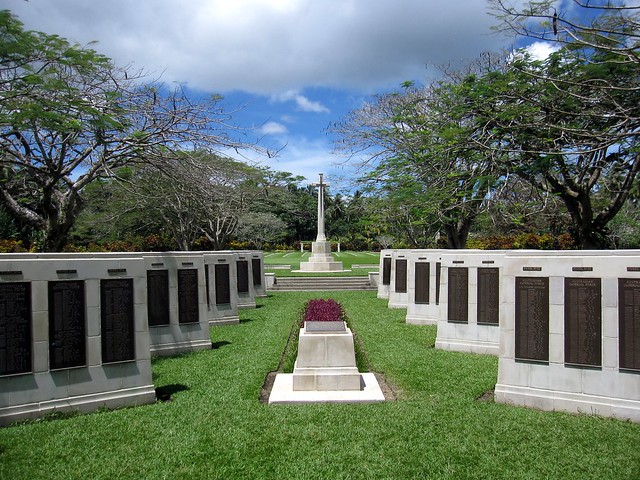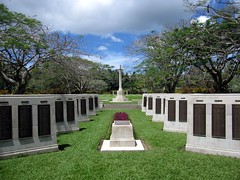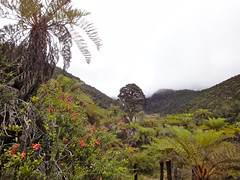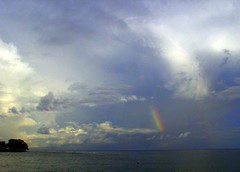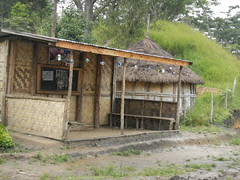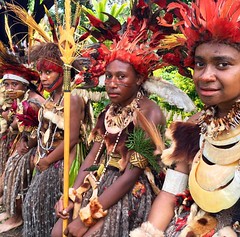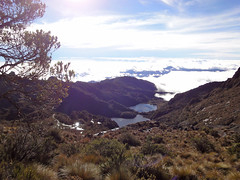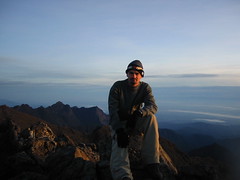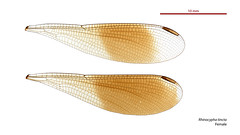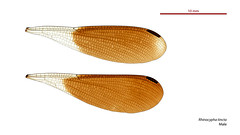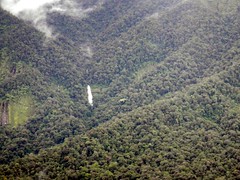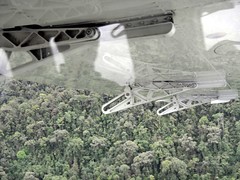 Papua New Guinea
Papua New Guinea
Papua New Guinea (abbreviated PNG; English: /ˈpæp(j)uəˈɡɪniˈp-/, English: /ˈppwə-ˈppjə-ˈppə-/), officially the Independent State of Papua New Guinea (; Hiri: Independen Stet bilong Papua Niu Gini), is a country in Oceania that comprises the eastern half of the island of New Guinea and its offshore islands in Melanesia (a region of the southwestern Pacific Ocean north of Australia). Its capital, located along its southeastern coast, is Port Moresby. The country is the world's third largest island country, with an area of .
At the national level, after being ruled by three external powers since 1884, including nearly 60 years of Australian administration starting during World War I, Papua New Guinea established its sovereignty in 1975. It became an independent Commonwealth realm in 1975 with Elizabeth II as its queen. It also became a member of the Commonwealth of Nations in its own right.
There are 839 known languages of Papua New Guinea, one of the most linguistically diverse countries in the world. As of 2019, it is also the most rural, as only 13.25% of its people live in urban centres. Most of the population of more than 8 million people live in customary communities. Although government estimates have placed the country's population at 9.4 million, it was reported in December 2022 that a yet-to-be-published study suggests the true population is close to 17 million.
The country is believed to be the home of many undocumented species of plants and animals.
The sovereign state is classified as a developing economy by the International Monetary Fund; nearly 40% of the population are subsistence farmers, living relatively independently of the cash economy. Their traditional social groupings are explicitly acknowledged by the Papua New Guinea Constitution, which expresses the wish for "traditional villages and communities to remain as viable units of Papua New Guinean society" and protects their continuing importance to local and national community life. Papua New Guinea has been an observer state in the Association of Southeast Asian Nations (ASEAN) since 1976, and has filed its application for full membership status. It is a full member of the Commonwealth of Nations, the Pacific Community, and the Pacific Islands Forum.
Etymology
The word papua is derived from an old local term of uncertain origin. "New Guinea" (Nueva Guinea) was the name coined by the Spanish explorer Yñigo Ortiz de Retez. In 1545, he noted the resemblance of the people to those he had earlier seen along the Guinea coast of Africa. Guinea, in its turn, is etymologically derived from the Portuguese word . The name is one of several toponyms sharing similar etymologies, ultimately meaning "land of the blacks" or similar meanings, in reference to the dark skin of the inhabitants.
History
Archaeological evidence indicates that humans first arrived in Papua New Guinea around 42,000 to 45,000 years ago. They were descendants of migrants out of Africa, in one of the early waves of human migration. A 2016 study at the University of Cambridge by Christopher Klein et al. suggests that it was about 50,000 years ago that these peoples reached Sahul (the supercontinent consisting of present-day Australia and New Guinea). The sea levels rose and isolated New Guinea about 10,000 years ago, but Aboriginal Australians and Papuans diverged from each other genetically earlier, about 37,000 years BP. Evolutionary Geneticist Svante Pääbo found that people of New Guinea share 4%–7% of their genome with the Denisovans, indicating that the ancestors of Papuans interbred in Asia with these archaic hominins.
Agriculture was independently developed in the New Guinea highlands around 7000 BC, making it one of the few areas in the world where people independently domesticated plants. A major migration of Austronesian-speaking peoples to coastal regions of New Guinea took place around 500 BC. This has been correlated with the introduction of pottery, pigs, and certain fishing techniques.
In the 18th century, traders brought the sweet potato to New Guinea, where it was adopted and became a staple food. Portuguese traders had obtained it from South America and introduced it to the Moluccas. The far higher crop yields from sweet potato gardens radically transformed traditional agriculture and societies. Sweet potato largely supplanted the previous staple, taro, and resulted in a significant increase in population in the highlands.
Although by the late 20th century headhunting and cannibalism had been practically eradicated, in the past they were practised in many parts of the country as part of rituals related to warfare and taking in enemy spirits or powers. In 1901, on Goaribari Island in the Gulf of Papua, missionary Harry Dauncey found 10,000 skulls in the island's long houses, a demonstration of past practices. According to Marianna Torgovnick, writing in 1991, "The most fully documented instances of cannibalism as a social institution come from New Guinea, where head-hunting and ritual cannibalism survived, in certain isolated areas, into the Fifties, Sixties, and Seventies, and still leave traces within certain social groups."
European encounters
Little was known in Europe about the island until the 19th century, although Portuguese and Spanish explorers, such as Dom Jorge de Menezes and Yñigo Ortiz de Retez, had encountered it as early as the 16th century. Traders from Southeast Asia had visited New Guinea beginning 5,000 years ago to collect bird-of-paradise plumes.
Colonialism
The country's dual name results from its complex administrative history before independence. In the nineteenth century, Germany ruled the northern half of the country for some decades, beginning in 1884, as a colony named German New Guinea. In 1914 after the outbreak of World War I, Australian forces captured German New Guinea and occupied it throughout the war. After the war, in which Germany and the Central Powers were defeated, the League of Nations authorised Australia to administer this area as a League of Nations mandate territory that became the Territory of New Guinea.
Also in 1884, the southern part of the country became a British protectorate. In 1888 it was annexed, together with some adjacent islands, by Britain as British New Guinea. In 1902, Papua was effectively transferred to the authority of the new British dominion of Australia. With the passage of the Papua Act 1905, the area was officially renamed the Territory of Papua, and Australian administration became formal in 1906. In contrast to establishing an Australian mandate in former German New Guinea, the League of Nations determined that Papua was an external territory of the Australian Commonwealth; as a matter of law it remained a British possession. The difference in legal status meant that until 1949, Papua and New Guinea had entirely separate administrations, both controlled by Australia. These conditions contributed to the complexity of organising the country's post-independence legal system.
World War II
During World War II, the New Guinea campaign (1942–1945) was one of the major military campaigns and conflicts between Japan and the Allies. Approximately 216,000 Japanese, Australian, and U.S. servicemen died. After World War II and the victory of the Allies, the two territories were combined into the Territory of Papua and New Guinea. This was later referred to as "Papua New Guinea."
The natives of Papua appealed to the United Nations for oversight and independence. The nation established independence from Australia on 16 September 1975, becoming a Commonwealth realm, continuing to share the British monarch as its head of state. It maintains close ties with Australia, which continues to be its largest aid donor. Papua New Guinea was admitted to membership in the United Nations on 10 October 1975.
Bougainville
A secessionist revolt in 1975–76 on Bougainville Island resulted in an eleventh-hour modification of the draft Constitution of Papua New Guinea to allow for Bougainville and the other eighteen districts to have quasi-federal status as provinces. A renewed uprising on Bougainville started in 1988 and claimed 20,000 lives until it was resolved in 1997. Bougainville had been the primary mining region of the country, generating 40% of the national budget. The native peoples felt they were bearing the adverse environmental effects of the mining, which contaminated the land, water and air, without gaining a fair share of the profits.
The government and rebels negotiated a peace agreement that established the Bougainville Autonomous District and Province. The autonomous Bougainville elected Joseph Kabui as president in 2005, who served until his death in 2008. He was succeeded by his deputy John Tabinaman as acting president while an election to fill the unexpired term was organised. James Tanis won that election in December 2008 and served until the inauguration of John Momis, the winner of the 2010 elections. As part of the current peace settlement, a non-binding independence referendum was held, between 23 November and 7 December 2019. The referendum question was a choice between greater autonomy within Papua New Guinea and full independence for Bougainville, and voters voted overwhelmingly (98.31%) for independence. Negotiations between the Bougainville government and national Papua New Guinea on a path to Bougainville independence began after the referendum, and are ongoing.
Chinese minority
Numerous Chinese have worked and lived in Papua New Guinea, establishing Chinese-majority communities. Anti-Chinese rioting involving tens of thousands of people broke out in May 2009. The initial spark was a fight between ethnic Chinese and indigenous workers at a nickel factory under construction by a Chinese company. Native resentment against Chinese ownership of numerous small businesses and their commercial monopoly in the islands led to the rioting.
African community
There is existing collaboration between Papua New Guinea and …
Hotels Papua New Guinea
 Holiday Inn & Suites Port Moresby, an IHG HotelPort Moresby
Holiday Inn & Suites Port Moresby, an IHG HotelPort Moresby Crowne Plaza Residences Port Moresby, an IHG HotelPort Moresby
Crowne Plaza Residences Port Moresby, an IHG HotelPort Moresby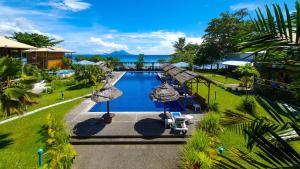 Rapopo Plantation ResortKokopo
Rapopo Plantation ResortKokopo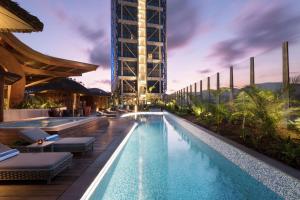 Hilton Port Moresby Hotel & ResidencesPort Moresby
Hilton Port Moresby Hotel & ResidencesPort Moresby Lae City HotelLae
Lae City HotelLae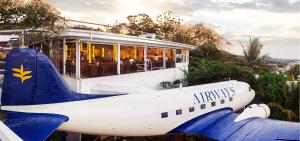 Airways HotelPort Moresby
Airways HotelPort Moresby Bird Of Paradise HotelGoroka
Bird Of Paradise HotelGoroka Holiday Inn Express Port Moresby, an IHG HotelPort Moresby
Holiday Inn Express Port Moresby, an IHG HotelPort Moresby
Looking for places related to Papua New Guinea?
Those are other destinations to find places related to Papua New Guinea:
